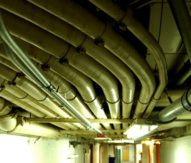
Commission reveals low emission strategy
The European Commission’s low emission mobility strategy sets ‘clear and fair guiding principles’ for member states as they prepare for a low carbon economy.
The shift towards a circular economy has begun. To maintain Europe’s competitiveness, the commission must respond to increasing mobility needs. The Energy Union strategy is designed to contribute to this aim.
The low emission mobility strategy frames the initiatives that the commission is planning, mapping the areas in which its options are being explored. It also shows how initiatives in related fields are linked and how synergies can be achieved.
The commission is attempting to promote the strategy as the tool that can ‘modernise the European economy and strengthen its internal market’.
According to a European Commission communication released yesterday (20 July): ‘The industry is investing in research and innovation activities and Europe has traditionally enjoyed a strong position in transport-related manufacturing. This position must be maintained. While in the field of road transport, Europe still leads on patents for the improvement of internal combustion engines, the rest of the world benefits from a higher number of patents on alternative energy and markets for low emission vehicles are growing faster outside the EU…
‘Low emission mobility and innovation will need to be an integral part of industrial policies of all member states. The question of competitiveness does not only concern major vehicle producers, be it of cars, heavy duty vehicles, planes, trains or vessels. Component manufacturers, often small and medium-sized enterprises, are a vital part of European manufacturing.’
The end result set out by the strategy shows the ‘clear’ ambition of the EU in this challenge: ‘by mid-century,’ the communication states, ‘greenhouse gas emissions from transport will need to be at least 60% lower than in 1990 and be firmly on the path towards zero. Emissions of air pollutants from transport that harm our health need to be drastically reduced without delay.’
The communication is available to read here.




